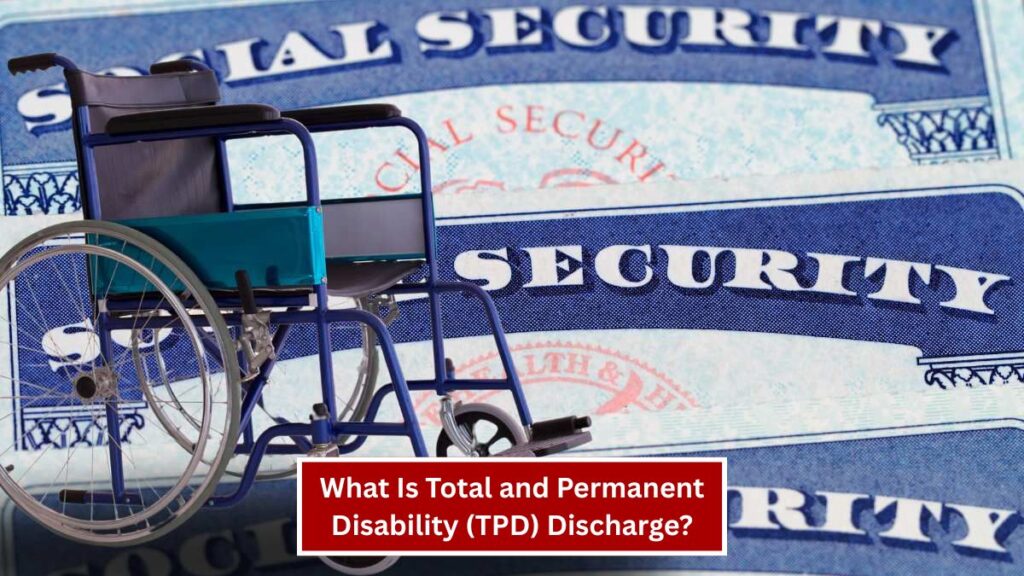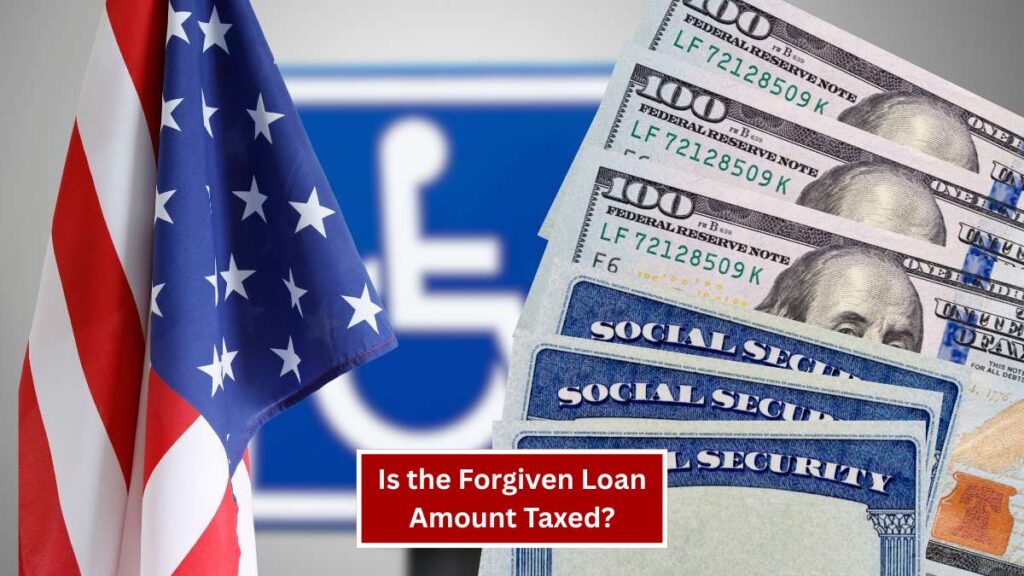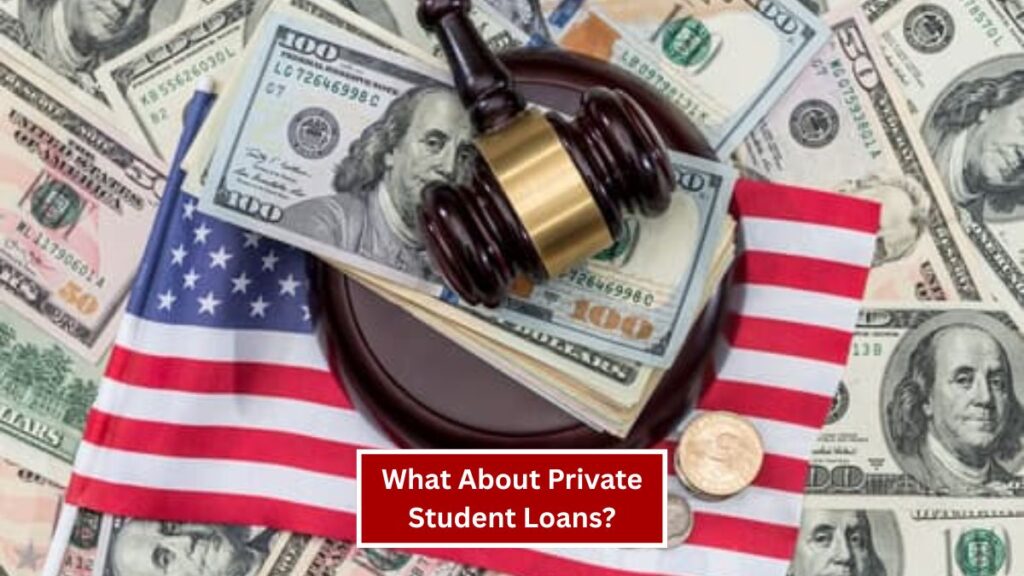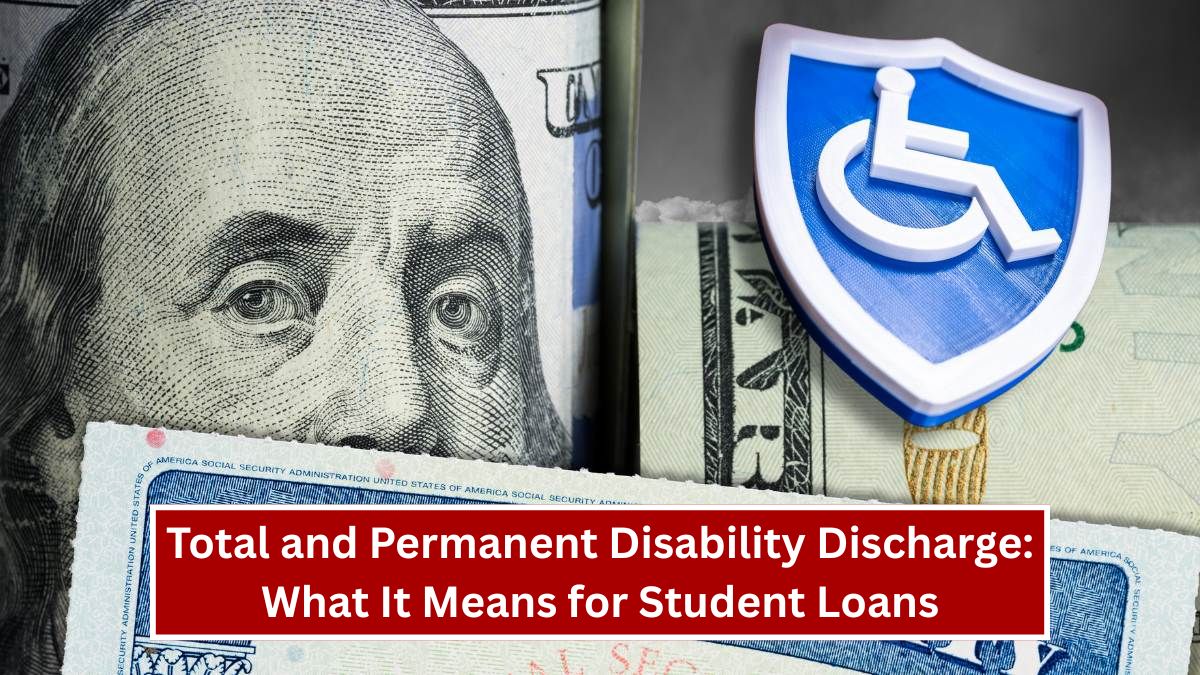If you become disabled and can’t work anymore, making your student loan payments can become difficult or even impossible. The good news is that in the U.S., there are special rules to help people with disabilities get relief from student loans. In this article, we will explain what happens to your loans if you are disabled, how to apply for loan forgiveness, and what steps you need to take.
What Is Total and Permanent Disability (TPD) Discharge?

If you are totally and permanently disabled (TPD), you may not have to pay back your federal student loans. This is called a TPD Discharge. The U.S. Department of Education offers this option to borrowers who can prove they are unable to work because of a disability that is expected to last a long time or be permanent.
Who Qualifies for TPD Discharge?
You may qualify for a TPD Discharge if you meet any one of the following:
- You receive Social Security Disability Insurance (SSDI) or Supplemental Security Income (SSI), and your notice says your next review is 5–7 years away.
- A doctor certifies that you are totally and permanently disabled.
- You are a veteran with a service-connected disability recognized by the U.S. Department of Veterans Affairs (VA).
How Do You Apply for a TPD Discharge?
You can apply online at disabilitydischarge.com or send in a paper form. You’ll need to provide:
- Proof of your disability (doctor’s certification, SSA documents, or VA paperwork).
- Your personal information and details about your loans.
The process is free, and there is no need to pay a company to help you apply.
What Happens After You Apply?
Once your application is submitted, loan payments will be paused. The government will review your information to decide if you qualify. If approved, your loans will be forgiven, meaning you do not have to pay them back.
If you applied with a doctor’s certification or through the SSA, there will be a 3-year monitoring period. This means the government will check your income and disability status during that time. If you start earning a certain amount or stop being disabled, the forgiveness could be taken back.
Is the Forgiven Loan Amount Taxed?

Before 2018, people had to pay taxes on the forgiven loan amount. Now, due to the Tax Cuts and Jobs Act and updates under the American Rescue Plan, student loans forgiven due to disability are not considered taxable income until at least 2025. That means you won’t have to pay taxes on the forgiven amount for now.
| Topic | Details |
|---|---|
| What Is TPD Discharge? | Total and Permanent Disability (TPD) Discharge allows borrowers who are severely disabled to have their federal student loans forgiven. |
| Who Qualifies for TPD Discharge? | You must be totally and permanently disabled and show proof through the VA, SSA, or a physician’s certification. |
| Which Loans Are Eligible? | Direct Loans, Federal Family Education Loans (FFEL), and Federal Perkins Loans are eligible for TPD discharge. |
| How to Apply? | Apply through the DisabilityDischarge.com website or submit the TPD discharge application by mail. |
| Required Documentation | Documentation from the Department of Veterans Affairs (VA), Social Security Administration (SSA), or a licensed physician. |
| Discharge Monitoring Period | If approved, there’s a 3-year monitoring period (SSA and doctor certifications only). Your income and disability status may be reviewed. |
| Impact on Taxes | As of recent law, TPD discharge is not taxed federally through 2025. Check your state tax laws as they may vary. |
| Automatic Discharge Eligibility | Some may qualify for automatic TPD discharge through data sharing between SSA/VA and the Department of Education. |
| Effect on Credit Score | Discharge will be noted, but usually doesn’t negatively affect your credit. Check with a credit counselor if concerned. |
| What If Denied? | You may reapply with updated medical evidence or consider appealing the decision. |
What About Private Student Loans?

Unfortunately, most private lenders are not required to forgive loans in case of disability. Some lenders may offer options, but it’s up to each lender’s policies. You should contact your private lender directly to ask about their disability discharge policy.
What If I Become Disabled After a Loan Discharge Is Denied?
If your situation changes and your condition gets worse, you can reapply for TPD discharge. Be sure to provide new documents or updated medical information to support your claim.
Becoming disabled is a life-changing event, and dealing with student loan debt can add more stress. Thankfully, the U.S. government has a system in place to help those who are no longer able to work due to total and permanent disability. If you qualify, you may not have to pay back your federal student loans at all. Remember to apply through the official website and submit the right documents to start the process. If you’re unsure, talk to a trusted adult, counselor, or financial advisor who can help guide you.
What is a Total and Permanent Disability (TPD) discharge?
It is a program that forgives federal student loans if the borrower is totally and permanently disabled.
How do I prove I am totally and permanently disabled?
You can submit documentation from the VA, SSA, or a licensed physician.
Do I need to repay the loans after TPD discharge?
No, if you’re approved, your loans are forgiven permanently.
Will I owe taxes on the forgiven loan amount?
Federal taxes do not apply through 2025, but some states may tax it.
Is there a risk of losing my discharge?
Yes, if you earn above the income limit or are no longer disabled during the 3-year review period (SSA or doctor route).
